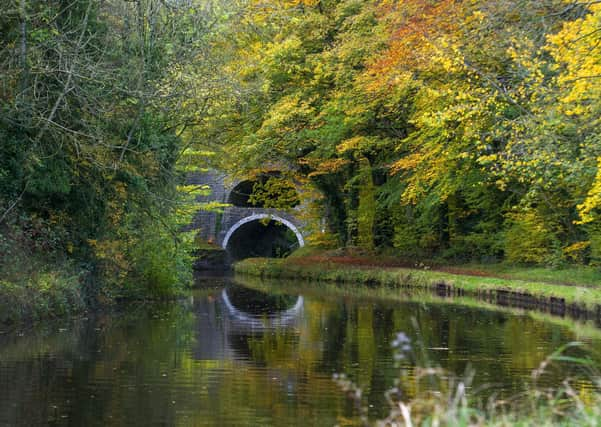Double arched bridge over Leeds and Liverpool Canal is fine feature of Yorkshire’s waterways


Framed here in Autumnal colours, as the surrounding tree leaves turn from green, to yellow, orange and red, the structure is Grade II-Listed by Historic England, meaning it is of special architectural interest.
Back in 2014, a heritage adviser for the Canal and River Trust picked out the site as a place of note, describing it as a “gem”. The Bingley Five-Rise Locks also made her list as “an engineering marvel” on the Northern waterways.
Advertisement
Hide AdAdvertisement
Hide Ad“The canal network is an amazing feat of engineering in itself,” she wrote in a blog for the Trust, “all built with hand picks and shovels nearly 200 years ago, the scale and impact of which in landscape terms can only be compared to the proposed HS2 project in modern times.”
The Historic England listing for this double arched bridge at East Marton, near Skipton, suggests it was built in circa 1790.
It is the upper of the two arches that carries the road, the A59, over the canal. It is said that an original packhorse bridge was transformed, with the second arch level added to make the passage of motorised traffic over the waterway easier.
The Leeds and Liverpool Canal, the longest canal in Britain built as a single waterway, has its fair share of heritage features, from bridges to locks and adjacent warehouses.
Advertisement
Hide AdAdvertisement
Hide AdConstruction took a long time and it was only in 1816, some 46 years after work first began, that there was at last a trans-Pennine water link between the two cities.
A tunnel at Foulridge, a village in Lancashire close to the border with North Yorkshire, that was opened in 1796, is associated with rather a quirky story, as the Canal and River Trust explains: “A tale that has passed into local folklore tells of a cow that fell into the water and swam the whole length of Foulridge Tunnel before being pulled out at the other end and revived with brandy.”
The double arched bridge pictured here is perhaps a more charming, and certainly more tangible, quirk of the route.
Technical details: Nikon D3s, 70-200mm lens, exposure of 1/125th @ f8, 1000ISO.
Advertisement
Hide AdAdvertisement
Hide AdSupport The Yorkshire Post and become a subscriber today. Your subscription will help us to continue to bring quality news to the people of Yorkshire. In return, you’ll see fewer ads on site, get free access to our app and receive exclusive members-only offers. Click here to subscribe.